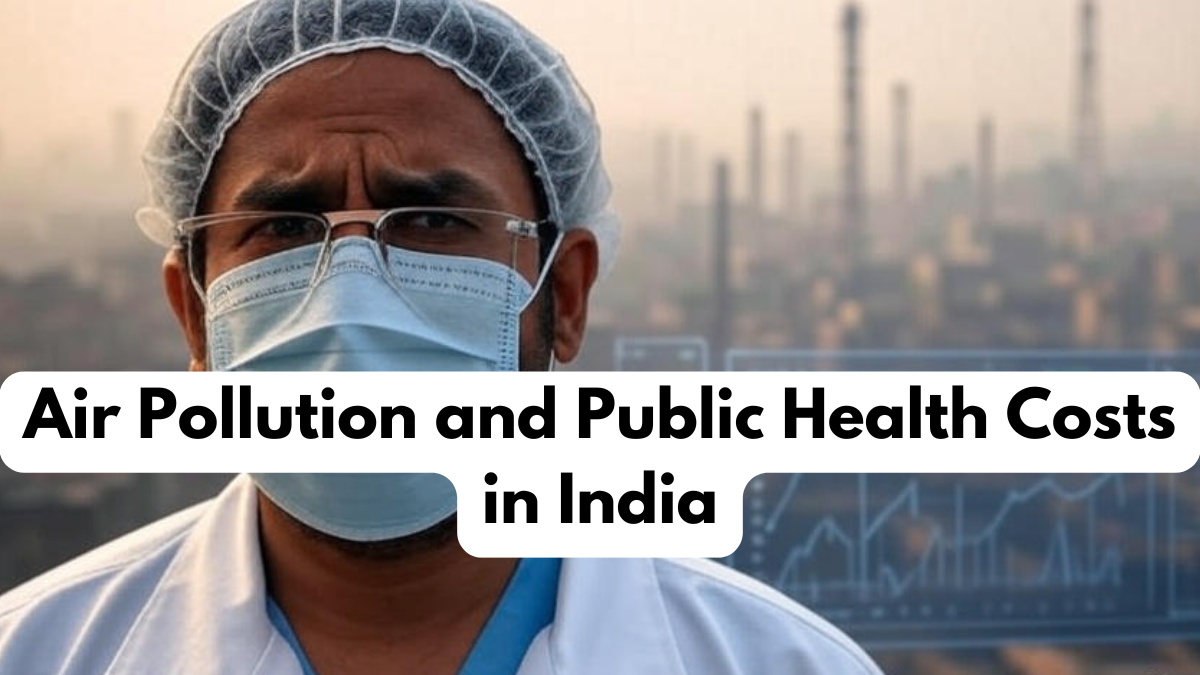Among the most urgent environmental challenges, air pollution India stands out as a silent crisis affecting millions of people daily. From smog-filled cities to industrial emissions and vehicular pollution, the air quality has reached alarming levels in many parts of the country. The consequences are not just environmental but deeply tied to the nation’s economy and well-being. The health impact of toxic air is becoming more visible, with rising cases of respiratory illnesses, cardiovascular problems, and premature deaths. Understanding these costs is critical for policymakers, healthcare systems, and citizens.

The Scale of Air Pollution in India
India consistently ranks among the countries with the worst air quality levels. According to global monitoring agencies, several Indian cities are often listed in the top 10 most polluted cities worldwide. Sources of air pollution India include:
- Vehicular emissions in urban areas
- Coal-based power plants
- Crop residue burning
- Industrial activities
- Household use of solid fuels
The widespread nature of pollution means that both urban and rural populations are exposed to harmful levels of fine particulate matter (PM2.5 and PM10), making the health impact severe and long-lasting.
Public Health Costs of Air Pollution
The burden of air pollution India is most clearly seen in the healthcare sector. Millions of cases of asthma, bronchitis, lung cancer, and heart disease can be traced directly to poor air quality. The health impact goes beyond respiratory conditions—it also weakens immunity, increases pregnancy complications, and lowers life expectancy.
The economic costs are equally staggering. Families spend a significant portion of their income on medical treatment, while the government bears higher public healthcare expenses. Lost productivity from sick days and early deaths also slows economic growth, making air pollution both a health and financial disaster.
Table: Health Impact of Air Pollution in India
| Health Condition | Link to Air Pollution | Estimated Burden in India |
|---|---|---|
| Respiratory diseases (Asthma, COPD) | Exposure to PM2.5 and toxic gases | Millions of cases annually |
| Cardiovascular diseases | Long-term exposure to polluted air | Rising incidence in cities |
| Child health complications | Poor maternal air quality exposure | Increased infant mortality |
| Reduced life expectancy | Chronic air pollution exposure | 5–7 years lower in major cities |
| Economic cost | Healthcare expenses and lost productivity | Billions of dollars annually |
This table highlights the wide-ranging health impact of air pollution, proving that it is not just an environmental problem but a socio-economic challenge as well.
Government and Community Responses
Addressing air pollution India requires collective action. The government has introduced measures such as the National Clean Air Programme (NCAP), stricter vehicular emission norms (BS-VI), and promotion of renewable energy. Public awareness campaigns and bans on stubble burning in some states also play a role.
At the community level, adopting cleaner fuels, shifting to electric vehicles, and creating green zones are steps toward reducing the health impact. Start-ups and tech innovations are also introducing air quality monitoring devices, pollution masks, and indoor purifiers to mitigate exposure. However, the challenge remains vast, requiring long-term commitment and cooperation.
Conclusion
The reality of air pollution India is grim, but it is not beyond repair. By acknowledging the severe health impact and economic costs, India can push for stronger policy enforcement, technological solutions, and community-driven change. A cleaner future will not only save lives but also reduce healthcare costs and improve overall quality of life. The urgency of the situation demands immediate and sustained action from all sectors of society.
FAQs
What are the main causes of air pollution India?
The major causes include vehicular emissions, coal-fired power plants, industrial pollution, stubble burning, and the use of solid fuels in households.
What is the health impact of air pollution in India?
The health impact includes respiratory illnesses, cardiovascular problems, weakened immunity, complications in childbirth, and reduced life expectancy.
How does air pollution affect children?
Children are more vulnerable as their lungs are still developing. Prolonged exposure can lead to asthma, reduced lung function, and higher infant mortality rates.
What steps are being taken to reduce air pollution India?
Measures include the National Clean Air Programme, stricter emission norms, promotion of renewable energy, bans on stubble burning, and public awareness drives.
Click here to know more.